Posted by Powee Celdran

Welcome back to the Byzantium Blogger and here we are back again after a rather long time with a Byzantine history article! This time around, I have decided to revive my usual blog posts on Byzantium but this time with a unique feature on top 10s concerning the lives of certain Byzantine emperors which I think have the most interesting stories. This one being the first of this top 10 series will cover possibly one of the most colorful yet controversial Byzantine emperors, Justinian II Rhinotmetos (r. 685-695/ 705-711), the emperor best remembered for losing his nose and throne yet eventually regaining both!

Now in Byzantine history, Justinian II has become one of the most remembered emperors not so much for being great but for being one of Byzantium’s most despised emperors for his cruelty to opposition against him and his constant desire for war and vengeance as well as for losing his nose and coming back to power with a fake golden one. Justinian II true enough gets such a highly negative reputation thanks to the Byzantine historians Theophanes the Confessor (758-817) and Nikephoros the Patriarch (758-828) who present him as an evil monster, thus making all of us believe he was one, and although he may have done some despicable things as emperor, there were also a number of times to feel bad for him as well such as when he lost his nose and throne in 695 and his eventual downfall and execution in 711- the event which true enough ended the Heraclian Dynasty- which he may have not deserved.
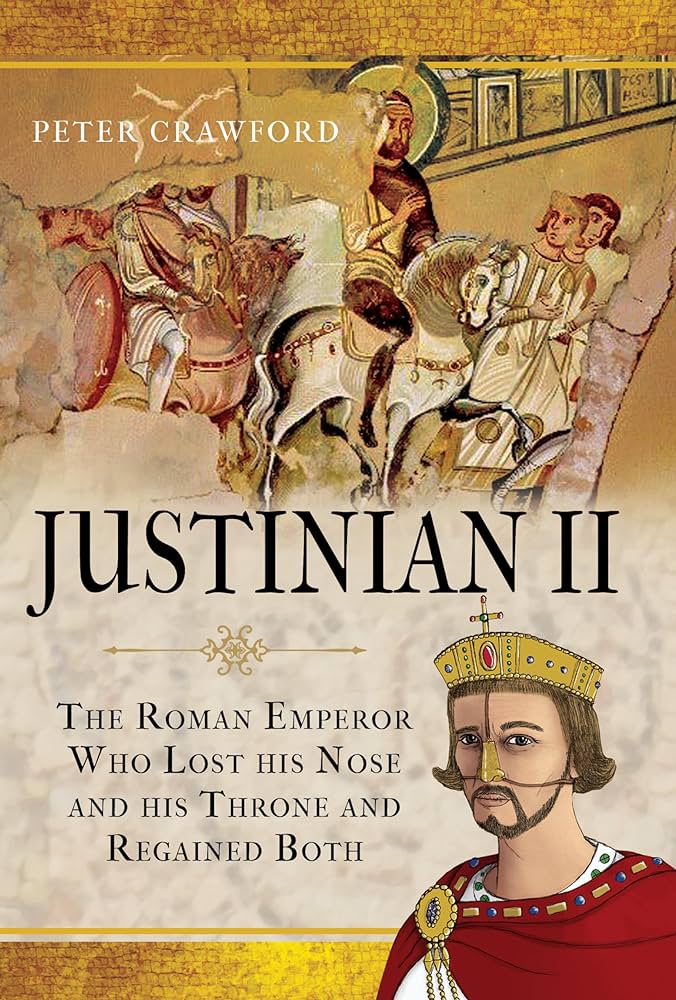
Just recently, I have finished reading the biography on Justinian II by Peter Crawford, and by reading it, it gave me new thoughts on how to view the said emperor in a different light thus leading me to create this article wherein I both express times to feel some sympathy for Justinian II no matter how terrible he may have been but also some moments to hate him as he true enough also did some unforgivable evil deeds as emperor. Due to reading the said book on Justinian II, this article too will be something like a commentary to it wherein most of the information here is based on it. Now, in this article, we will go over 5 times we felt bad for him and 5 times we hated him in an alternating pattern, and before we begin, please check out the latest video I made on Justinian II on my channel No Budget Films which is basically the same list we will go through in this article!

Follow me, Byzantine Time Traveller on Social Media:
Instagram: @byzantine_time_traveller
Facebook: Byzantine Time Traveller
Youtube: No Budget Films
Deviantart: Byzantium-blogger55
Art Station: Powee Celdran Porphyrogennetos
Patreon: Byzantine Time Traveller
Before we go through the list, here’s a quick background on the Byzantine Empire at the time of Justinian II. First of all, the Byzantine or Eastern Roman Empire of the 7th century was one in a state of constant warfare and shrinking territory. Although the century began with the empire having control of almost the entire Mediterranean, it soon enough lost most of its territories in Italy to the Lombards, all their territory in Southern Spain to the Visigoth Kingdom, and most of the Eastern provinces namely Egypt and the Levant and even some of Asia Minor to the Sassanid Persian Empire during the long war between both empires (602-628). Additionally, the Byzantines since the late 6th century lost most of their lands in the Balkans to the Avars and Slavs who in 626 during the war against the Persians even tried to besiege the imperial capital Constantinople but failed. Although the Byzantines won the war against the Sassanid Persians by 628 and regained territory lost to them, the Byzantines were too exhausted from the war to face the rise of a new rapidly expanding enemy from the south. These people from the south were the Arabs who after uniting under the new faith of Islam began rapidly expanding north to conquer both Byzantine and Sassanid Empires. The rapid and sudden expansion of the Arabs eventually conquered and destroyed the Sassanid Empire by 651 whereas the Byzantines following the catastrophic Battle of Yarmuk against the Arabs in 636 would once again lose the Levant and later Egypt to the Arabs, this time for good. With the rich provinces of Egypt and the Levant lost to the Arabs, the Byzantines had to adapt to the situation by reorganizing their empire by establishing military provinces known as Themes to further protect the empire which had been reduced by a lot. By the time Justinian II was born in 668, the Byzantine Empire had been severely reduced compared to how it was at the beginning of the 7th century wherein the Empire now only consisted of primarily Asia Minor, some of Greece and Macedonia, a colony in the Crimea known as Cherson north of the Black Sea, and parts of Italy and North Africa respectively under the semi-autonomous provinces known as the Exarchates of Ravenna and Africa. The Byzantines here, ever since the rise and expansion of the Arab Caliphate in the 630s had now been fighting on the defensive to defend what was left of their empire as not only were they facing the Arabs as while the century progressed, they would also face the expansion of aggressive powers namely the Bulgars and Khazars in the north-east who would also be potential allies to the Byzantines.
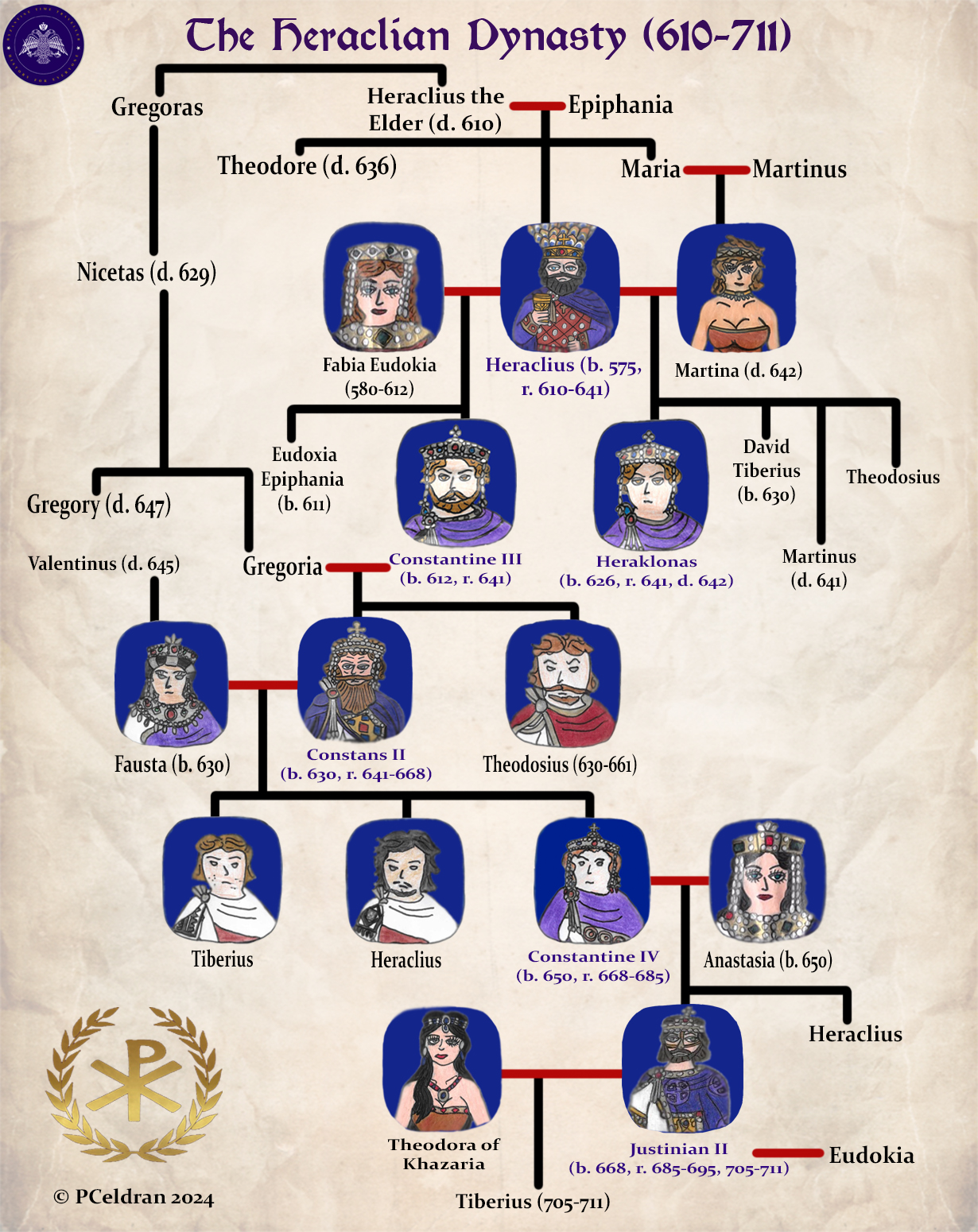

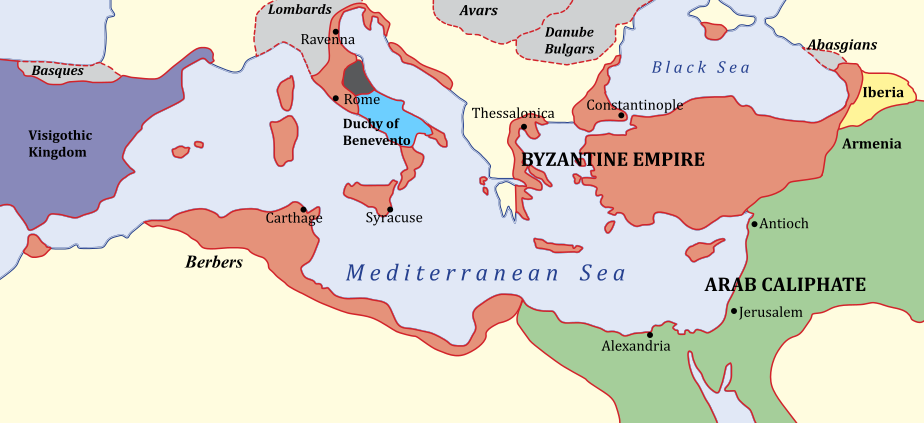
Related Articles from the Byzantium Blogger:
10 Byzantine Inventions You Should Know of
Byzantine Alternate History Chapter V
I. Felt Bad- He Grew up in Difficult Times

The future emperor Justinian II of the Heraclian Dynasty was born in around 668 to the newly crowned Byzantine emperor Constantine IV (r. 668-685) and his wife the empress Anastasia and was named after the emperor Justinian I the Great (r. 527-565) of the 6th century- hence during his reign, Justinian II would constantly try to emulate his namesake being Justinian I.
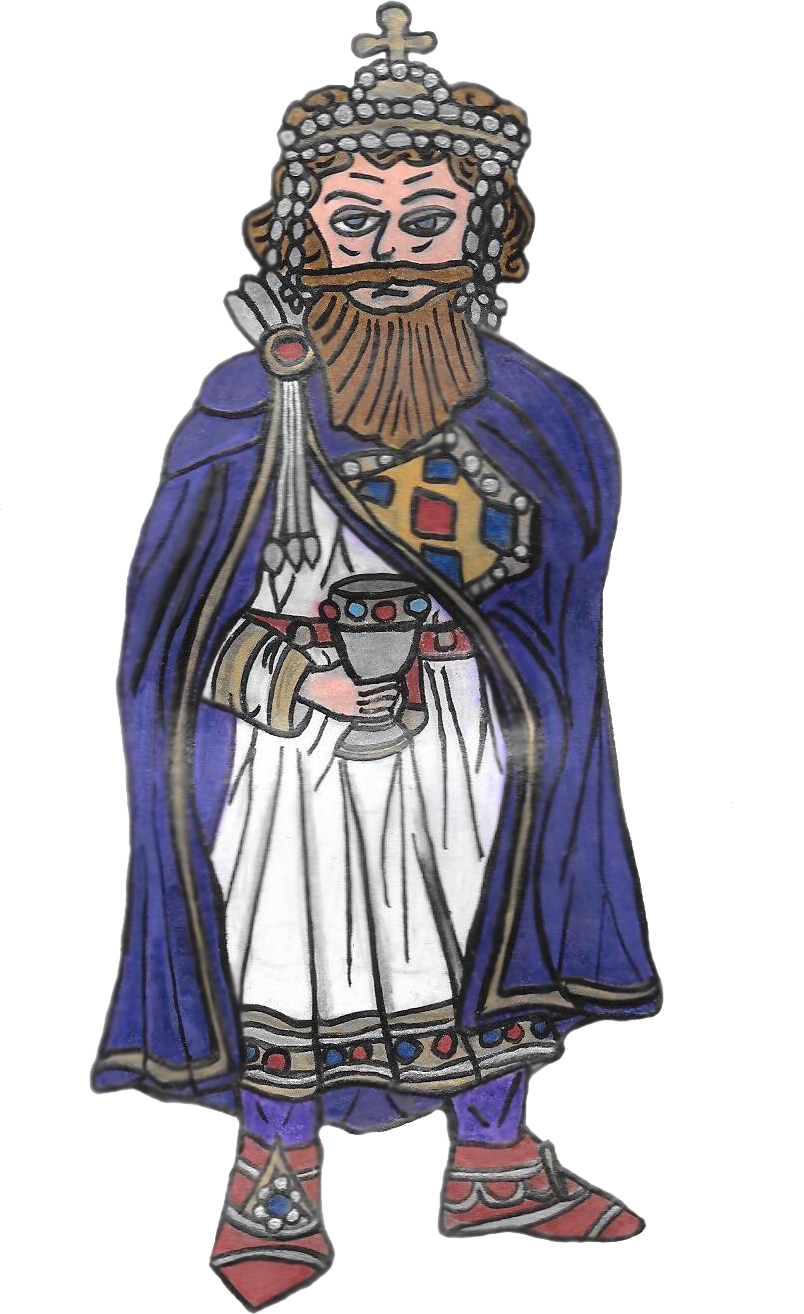
Coincidentally, Justinian II was born in the year 668, the same year his grandfather the emperor Constans II (r. 641-668) was assassinated in his bath in Syracuse, Sicily when he sought to relocate the Byzantine imperial capital there, though it is unclear whether Justinian was born before or after his grandfather’s death as his date of birth remains unknown while it is also speculated that he could have been born in the following year (669). When still a young child, Justinian had already gone through the difficulties his father the young Constantine IV had faced in ruling a troubled empire such as a number of military revolts in which all were crushed and annual Arab attacks on Byzantine territory, both by land and sea as Constantine IV true enough inherited from his father an empire troubled by invasions from the Arab Umayyad Caliphate, a rapidly expanding superpower that had just been formed under the rule of its first caliph Mu’awiyah I (r. 661-680) after overthrowing the first Islamic Empire known as the Rashidun Caliphate during the civil war known as the “First Fitnah” (656-661). The most important event that took place in Justinian’s childhood was the first Arab Siege of Constantinople (674-678)- an event which featured intermittent attacks by the Umayyad army and fleet from April to September for 4 consecutive years- which his father successfully defeated thanks to the invention of Greek Fire, therefore forcing the Arabs to retreat for good.

This was certainly such a great victory for the Byzantines that the Umayyad caliph Mu’awiyah I was forced to pay annual tribute to the Byzantines and following his death in 680, the Arab world was thrown into another civil war known as the “Second Fitnah”. Although the Byzantines were victorious over the Arab armies after 678, the young Justinian had spent these 4 years of his childhood in fear of whether the Arabs will destroy them or not as without Greek Fire, then possibly things would have ended differently. Additionally, Justinian’s father the emperor Constantine IV not only had to deal with Arab attacks as following the conclusion of a truce with the Umayyad Caliphate, Constantine first headed to Thessaloniki wherein he successfully relieved the city from a siege by the Slavs and afterwards, he turned his attention north to deal with the invading Bulgars under the leadership of Khan Asparukh (r. 681-700) who have been threatening Byzantium’s Danube frontier.

This however ended in a humiliating defeat for the Byzantines at the Battle of Ongal at the mouth of the Danube River in 680 due to Constantine having to leave the battlefield due to sickness which then led to the Byzantine army being thrown into disorder and thus being routed. Thanks to this defeat, Constantine IV was forced to cede land in Byzantine Thrace to the Bulgars and recognize the foundation of the Bulgar state of Asparukh in 681. Furthermore, Constantine IV in either 681 or 682 had also eliminated his younger brothers and co-emperors Heraclius and Tiberius by mutilating their noses which may have also affected the young Justinian; however, this was done to ensure Justinian’s succession while Constantine’s brothers too were never heard from again following this event, and thus when Constantine died of dysentery at the relatively young age of 35 in 685, his son Justinian II succeeded him as emperor at only 17.


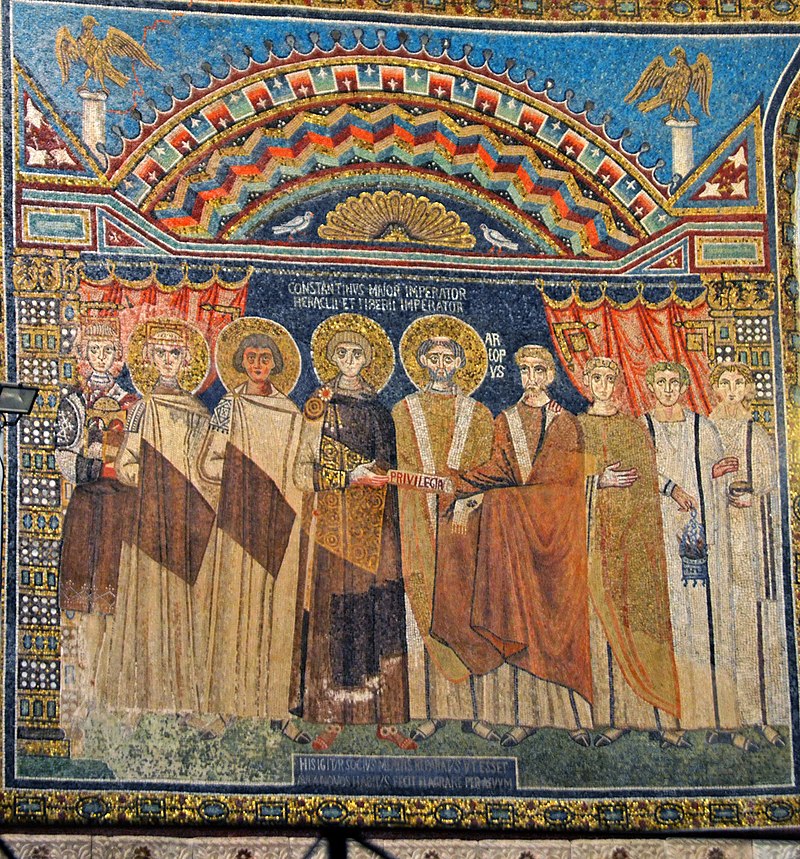
II. Hated Him- His Pointless Wars Against the Arabs and the Massacre of the Slavs

Thanks to Constantine IV’s victories over the Arabs, the political situation in Byzantium was stable and so immediately after beginning his first reign in 685, Justinian II broke the peace his father sealed with the Umayyad Caliphate by embarking on an unnecessary offensive campaign against the Arabs.

Here, despite Justinian II not personally leading the campaign, his armies led by the general Leontios- the Strategos (military governor) of the Anatolic Theme (military province) and a loyalist to his father- raided deep into Arab territory all the way into modern-day Armenia and Iran. The Byzantines were able to have the upper hand as the Umayyad Caliphate here was still engaged in the civil war known as the “Second Fitnah” against other Arab factions across the Middle East. The Byzantine attacks on Arab territory was so severe that the ruling caliph Abd al-Malik ibn Marwan (r. 685-705)- who coincidentally came to power in the same year as Justinian II- was forced to pay a higher amount of tribute to the Byzantines than what the Umayyads were paying to his father and agree to share rule over the island of Cyprus with the Byzantines. With peace temporarily settled with the Arabs, Justinian from 688-689 campaigned against the Slavs and Bulgars in the Balkans and Greece wherein he was successful at that he once again even relieved Thessaloniki from another Slavic siege, and thus the defeated Slavs were resettled into colonies at depopulated areas in Asia Minor in exchange for these said Slavs coming to the emperor’s assistance in battle when needed. These Slav warriors which numbered up to 30,000 true enough came to the emperor’s service when war resumed with the Arabs in 692. The Byzantine forces led by Justinian II himself and the same general Leontios with their 30,000 Slav allied troops under their leader Neboulos then confronted the Arabs at the Battle of Sebastopolis in Cilicia in 692 which was at first an undecisive battle but ended in a defeat for the Byzantines due to 20,000 of the Slavs defecting to the Arabs in exchange for higher pay and land to settle in Syria. Frustrated due to this defeat, Justinian as said by the historian Theophanes ordered a massacre on any Slavs he could lay his hands on particularly in the region of Bithynia in Asia Minor (the Opsikion Theme) including the women and children; though the source mentioning this massacre remains unreliable and there is no other evidence for it.

III. Felt Bad- He was Provoked by the Caliph Abd al-Malik

After 3 years of war against the Arabs, both the Umayyad caliph Abd al-Malik ibn Marwan and the Byzantine emperor Justinian II settled peace with each other in 688 with the agreement to share rule over Cyprus and to split its tax revenue together with that of Armenia and Iberia.
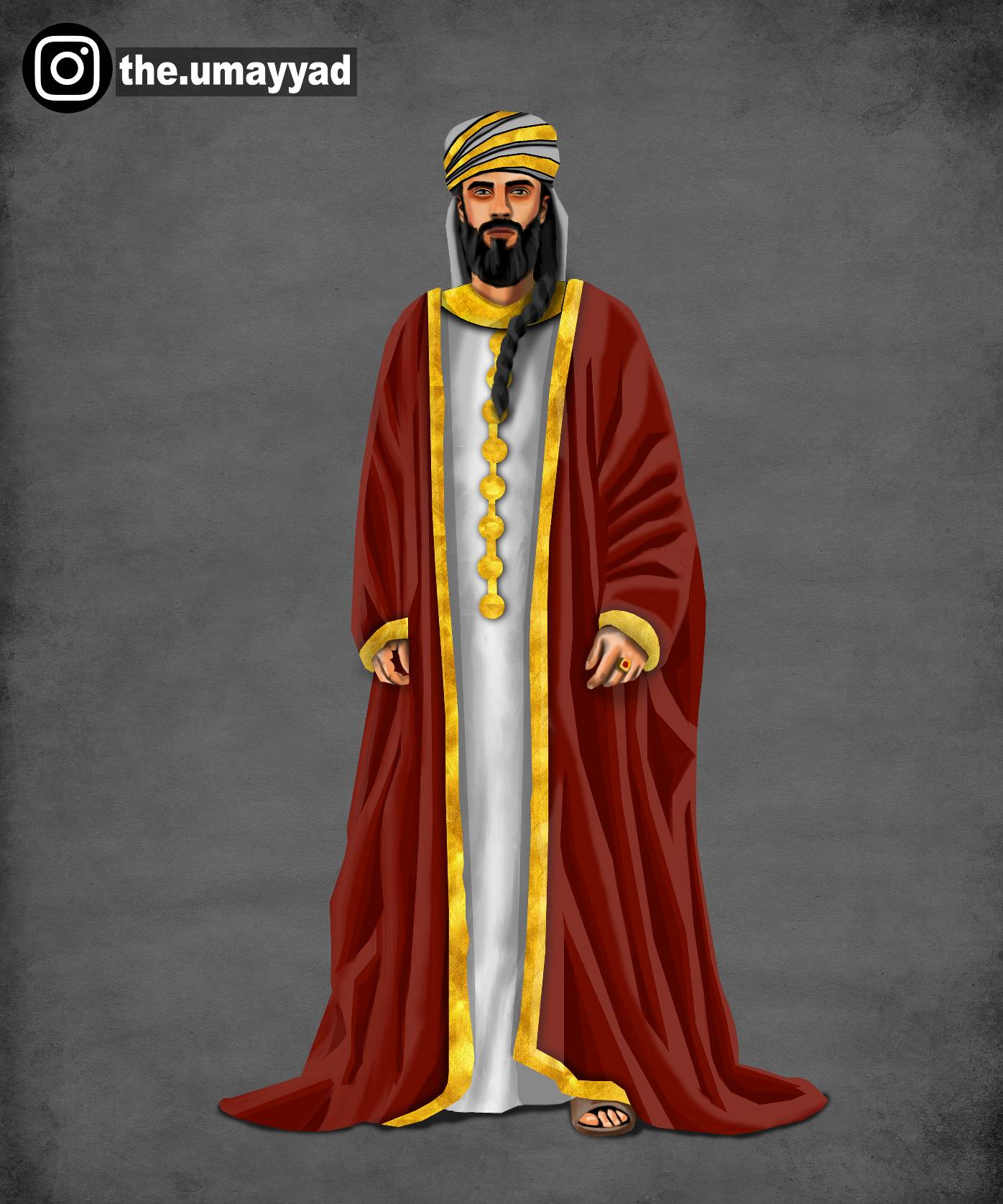
Additionally, part of this agreement was that Justinian II was to resettle the troublesome Syrian Christians under Arab rule known as the Mardaites into Byzantine territory wherein they were thus resettled in the newly created Karabisianoi Themeor simply the “Naval Theme” of the Byzantine Empire located in Southern Asia Minor wherein the Mardaites were to be enlisted as rowers in the Byzantine navy. Justinian II too during the period of peace with the Arabs established the new Byzantine Theme of Hellas in Greece following his victories over the Slavs there all while he too settled a number of Cypriots from Cyprus at a colony in Cyzicus in Asia Minor along the Sea of Marmara. However, not too long after in 692, war resumed between both empires, and although Justinian can be blamed for restarting the hostilities with the Arabs, he was also provoked to resume war by the caliph Abd al-Malik who in 692 as well defeated all his enemies in the caliphate after his forces successfully captured Mecca from them and thus ending the Second Fitnah. This renewed conflict all began when the caliph who was paying tribute to the Byzantines was not paying the exact amount of gold and not in the Byzantine currency- which the Arabs were originally using- but using the new coinage of the Arabs which Abd al-Malik began minting all while Justinian further offended the caliph by putting Christian symbols, most notably the image of Christ together with his own on the coins he minted. In retaliation to Justinian’s minting of coins, the caliph ordered that all papyrus scrolls exported from Arab held Egypt to the Byzantine Empire- which had already been in practice since the loss of Byzantine Egypt to the Arabs since the 640s- have Islamic art put on them which only further angered Justinian. In response to this, Justinian threatened the caliph that he will mint coins with words insulting Islam if the caliph did not stop sending these papyrus scrolls, however Justinian instead decided to declare war on the Arabs in 692, and following the Byzantines’ defeat to the Arabs in Sebastopolis thanks to the mass defection of the Slavs, Arab attacks on Byzantine territory grew even worse as the years went by additionally also thanks to a rebellion in Armenia against Byzantine rule which therefore opened the province to Arab attacks which resulted in their conquest of Byzantine Armenia from 694-695.

IV. Hated Him- His Strict Religious Policies and Harsh Taxation

Another highlight of Justinian II’s first rule of 10 years was his holding of the Quinisext Church Council in either 691 or 692 which was done for no other reason except for the sake of Justinian having the achievement of holding a Church Council when there was really no need for one. Justinian simply wanted to imitate the reign of both his father Constantine IV who held the 6th Ecumenical Council in Constantinople from 680-681 and his namesake Emperor Justinian I the Great who held the 5th Ecumenical Council in Constantinople as well in 553. At the 6th Ecumenical Council held by Constantine IV, the doctrine of Monothelitism which his great-grandfather Emperor Heraclius (r. 610-641) initiated to find common ground between the Orthodox population and the Monophysites and was championed by Constantine IV’s father Constans II was declared heresy and thus returning the empire’s official faith to the Orthodoxy defined at the Council of Chalcedon in 451.

With his father having successfully achieving returning the empire to Orthodoxy as its official religion through the council he held, for his son and successor Justinian II, there was really no need for a new council but he still held one anyway to further expand and clarify the rulings of his father’s Church Council and that of the 5th Ecumenical Council held by Justinian I, hence it was known as the “Quinisext Council” meaning “fifth and sixth”. Although the Quinisext Council did not rule anything significant for the Christian Church, it produced a vast number of canons made by the emperor himself which the people despised as many of them forbade anything with just a hint of Pagan practices such as festivals, theatre plays, and games, which therefore made Justinian unpopular among the common people. Additionally, the canons Justinian issued in this council were not received well by Pope Sergius I, thus Justinian ordered that the pope be arrested- just as his grandfather Constans II did with Pope Martin I in 653- but this time the arrest was unsuccessful as the Byzantine militias in Italy instead sided with the pope. Back in Constantinople though, the one group that despised Justinian II the most were the aristocrats as Justinian favored the poor over them as seen by his issuing of laws that protected peasants from the aristocrats buying their lands, though Justinian too brutally taxed both rich and poor through his finance ministers Stephen the Persian and Theodotus. It is even said that Stephen tortured the rich aristocrats to force them to pay such high taxes which the emperor true enough did not use for the good of the empire but to construct costly and luxurious structures for the great palace such as the emperor’s dining hall. Justinian true enough did not only alienate the aristocracy but the Church as well when he ordered a church structure in the great palace torn down to build a fountain which thus made the Patriarch of Constantinople Kallinikos I never forgive him for doing such a thing.

V. Felt Bad- He was Deposed and His Nose was Mutilated

Thanks to Justinian II’s harsh taxation towards the rich and his strict religious policy, both rich and poor and even the Church eventually turned on him by 695 as soon as Justinian released the general Leontios from prison who he imprisoned back in 692 after the Byzantines’ defeat at Sebastopolis which he blamed Leontios for.

When released from prison, Leontios who here was assigned by Justinian to be the governor of the new Hellas Theme in Greece after receiving a prophecy back when he was imprisoned from two monks that he would be emperor rallied the people of Constantinople to his cause in overthrowing Justinian II. In only a single day, Justinian lost all support and was thus dragged out of the palace by the mob now supporting Leontios as emperor- who was although backed by the aristocrats- all while the patriarch Kallinikos I who also came to hate Justinian turned on him by rallying more people at the Hagia Sophia whereas political prisoners too were released and Justinian’s finance ministers Stephen and Theodotus dragged by the mob to the Forum of the Ox in Constantinople and burned alive. Justinian was thus brought to the Hippodrome of Constantinople wherein the crowd watched him humiliatingly get his nose cut off. As Leontios was loyal to Justinian’s father Constantine IV, he chose to spare his life out of reverence for the emperor’s late father. Thus, with no more nose, Justinian II lost the throne as it was believed by the Byzantines that any kind of physical deformity could disable a man from ruling considering that the emperor as God’s representative on earth had to be physically perfect. The general Leontios thus took the throne whereas Justinian was sent off by ship to the remote Byzantine province of Cherson north of the Black Sea, but it wasn’t over yet for Justinian.

VI. Hated Him- His Return to Power and Purge

Following his deposition in 695, Justinian II now without a nose spent the next 10 years in exile in Cherson although still determined to regain power. All while Justinian plotted his return first with the Khazars and then with the Bulgars, things were again politically unstable in Constantinople.

Leontios, the general who overthrew Justinian and became emperor true enough just like Justinian lost the throne 3 years later in 698 following the Byzantines’ permanent loss of Carthage to the Arabs- which marked the end of Byzantine rule over Africa- thus Leontios like Justinian as well was overthrown by the army and mob and got his nose mutilated too, though he was exiled to a monastery in Constantinople by Apsimar, a commander from the naval Theme who returned from the expedition in Carthage who usurped him and then became the new emperor Tiberius III. However, in 705 the noseless Justinian II after forming an alliance with the Bulgar khan Tervel (r. 700-721) managed to return to Constantinople and with the assistance of Bulgar troops, Slavs, and some Byzantine deserters, Justinian managed to sneak into the city using a small breach in the wall where the damaged Aqueduct of Valens was which apparently had not been repaired ever since it was damaged in the Avars’ Siege of Constantinople back in 626. As the emperor Tiberius III- who although had a rather successful reign militarily- fled the city, Justinian II thus regained the throne despite missing a nose, and thus for his support, Justinian rewarded Tervel with great amounts of gold, silks, and the imperial title of “Caesar” making him the first foreigner to receive the said title.

After tracking down and capturing Tiberius in Asia Minor and dragging Leontios out of the monastery he was locked up in, Justinian in early 706 when watching a race at the Hippodrome placed one foot on the neck of Leontios and the other on Tiberius’ neck as a sign of having conquered both of them for the audience to see and laugh at. Once humiliating both Leontios and Tiberius, Justinian had both executed by beheading which was thus followed by a brutal purge of any loyalists to either Leontios or Tiberius who Justinian executed in the most gruesome of ways. Among the victims of Justinian’s purge was the patriarch Kallinikos I who Justinian had blinded and exiled to Rome as he was responsible for Justinian’s deposition back in 695 in the first place as he was the one to crown Leontios; Justinian then replaced Kallinikos as Patriarch of Constantinople with Cyrus, a loyal follower of his from his exile in Cherson. As for Leontios and Tiberius, although their bodies were dumped in the sea, people from the shore recovered them and buried them at a church in one of the Princes’ Islands in the Sea of Marmara.
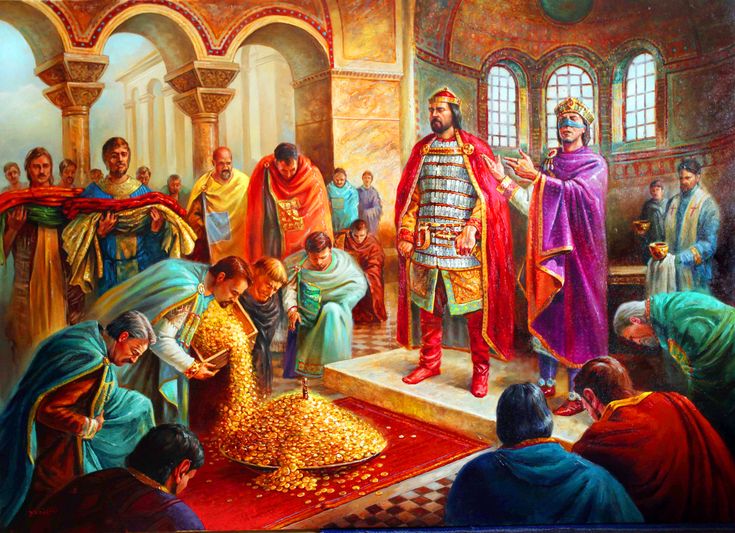
VII. Felt Bad- He was Hunted Down Even in Exile

Now, if you wonder what had been going on with Justinian II during his 10 years in exile, we will talk about it right here. First of all, while he was in the remote city of Cherson in the Crimea, imperial authorities kept a close eye on him, however at one point, Justinian began expressing his desire to return to power and thus the authorities considered having him brought back to Constantinople to be executed.
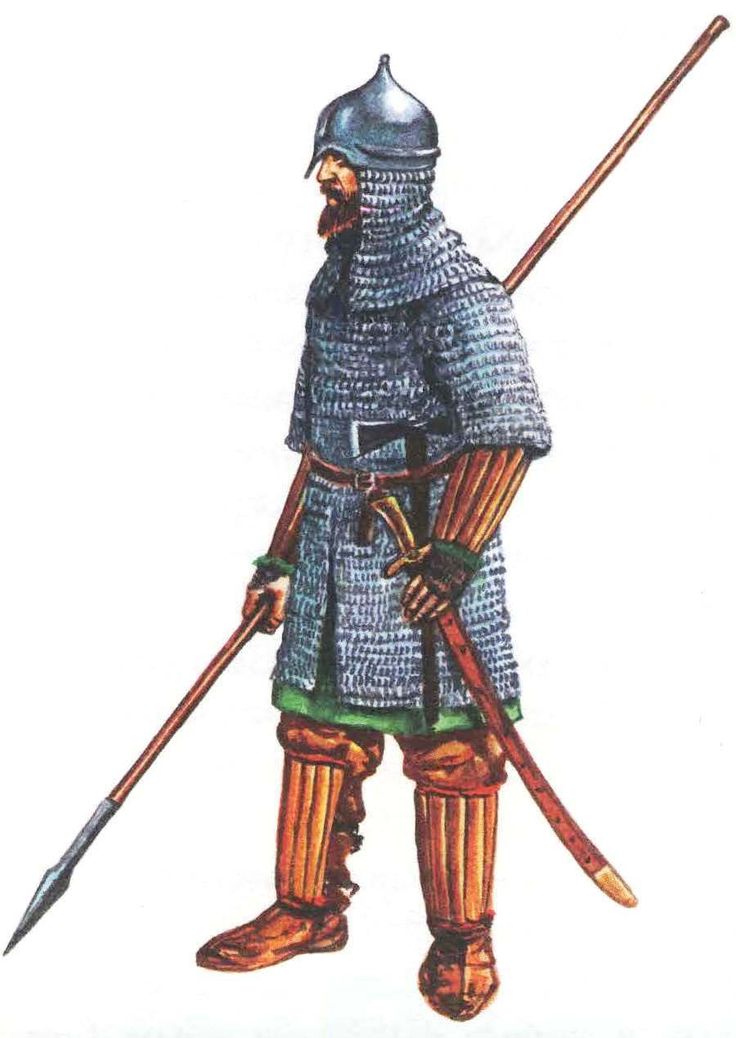
Fearing for his life, Justinian in around 702 or 703 escaped Cherson and headed first to the Crimean Goths, but when they refused his offer to help him regain the Byzantine throne as they were too few in number to assist him, he headed east to the Khazar Khaganate in today’s Southern Russia wherein he managed to seal an alliance with its ruler Busir Khagan who agreed to provide military assistance to Justinian in regaining the throne. Additionally, Busir married off his sister to Justinian to seal the alliance and when married to him, she was renamed Theodora after the famous empress and wife of Justinian the Great. Justinian and Theodora were then given a place to live in the Khazar city of Phanagoria along the Black Sea, however the new emperor Tiberius III when hearing of Justinian’s whereabouts in 704 bribed Busir to hunt down his brother-in-law and kill him.
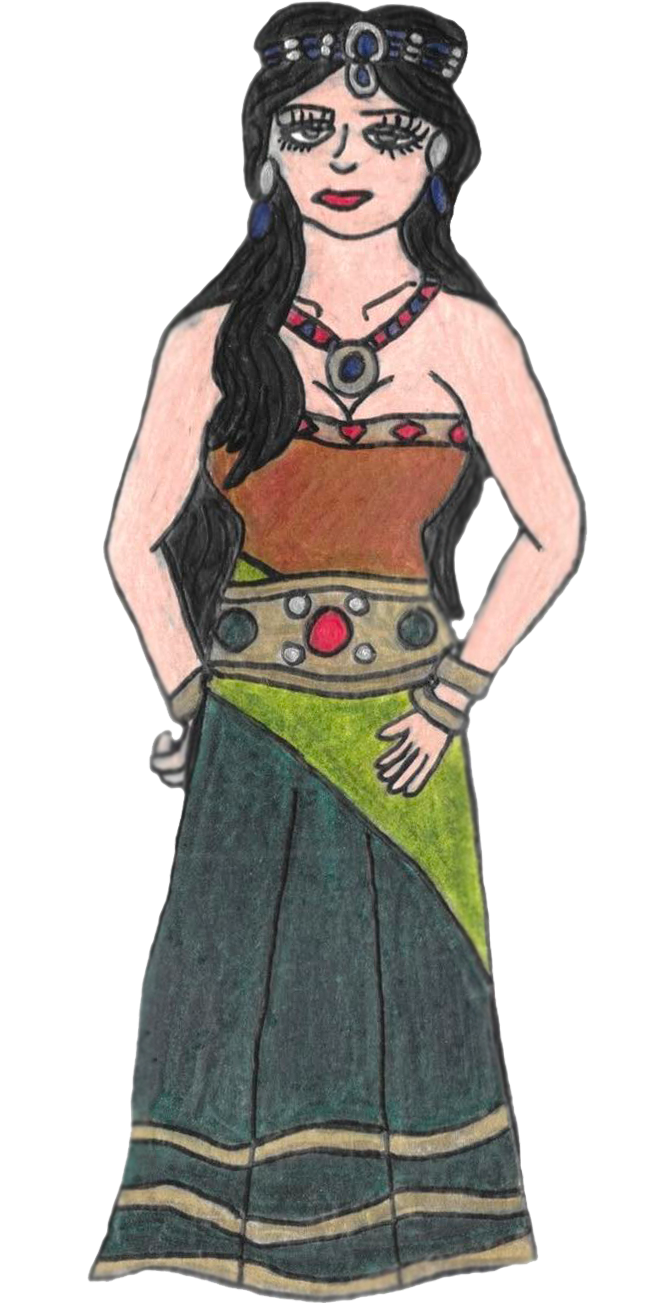
Busir knowing that Tiberius’ offer was better and more realistic than Justinian’s thus sent two of his Khazar officials Papatzys and Balgitzin to Justinian’s house in Phanagoria, however Justinian was already informed of the plot by his wife Theodora and as the officials entered his home, Justinian killed both of them personally by strangling them. Now betrayed by the Khazars and his own brother-in-law, Justinian using a fishing boat sailed back to Cherson to gather his supporters and from there west into Bulgarian territory. While in the Black Sea, they were caught up in a storm which almost killed them all wherein Justinian- when being told by one of his companions that he would have to promise to not seek revenge if they survive the storm- was reported to have said “if I spare a single enemy, may God drown me here”, thus suggesting his desire to seek revenge on those who overthrew him. However, they managed to make it across the Black Sea into Bulgarian territory where Justinian thus successfully made his alliance with Tervel to regain the Byzantine throne in 705. Although Justinian’s wife Theodora was left behind in Khazaria when Justinian regained the throne, she was eventually sent back to Constantinople in around 706 by her brother the Khagan wherein at this time she had already produced a son with Justinian; the half-Khazar boy was thus named Tiberius and made co-emperor by his father whereas Theodora here would be the first foreign Byzantine empress.
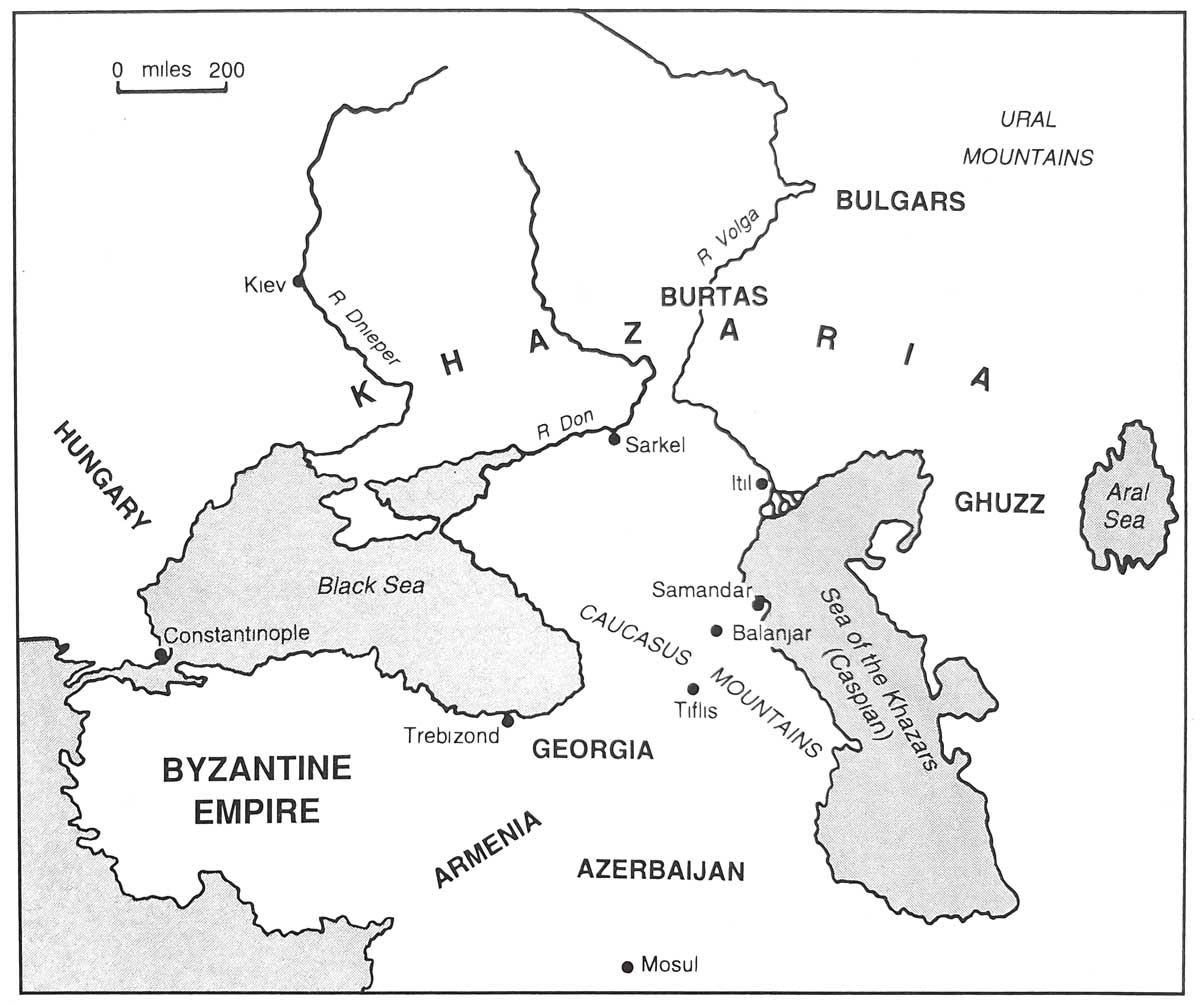
VIII. Hated Him- He Turns on an Ally and Sends One of his Men to Die

Although the Bulgar khan Tervel helped Justinian II regain the Byzantine throne in 705 in return for being awarded the title of Caesar, silks, gold, and some lands in the Balkans ceded to him, 3 years later in 708, Justinian suddenly betrays him possibly to take back the lands he gave Tervel.

The reasons though remain unclear to why Justinian turned on Tervel or vice-versa but what definitely happened is that in 708, both Justinian and Tervel with their respective forces battled each other in Anchialos in today’s Bulgaria along the shore of the Black Sea. The Battle of Anchialos thus ended with a humiliating defeat for Justinian II with the Bulgars’ surprise attack on the Byzantine camp, thus the Byzantine army was massacred all while the emperor and his surviving troops barely escaped with their lives to a ship headed back to Constantinople. Justinian II following this defeat thus agreed to resume peace with Tervel by returning the lands promised to him. To make things worse for the Byzantines, the Arab Umayyad Caliphate now under the rule of the new caliph Al-Walid I (r. 705-715) who succeeded his father Abd al-Malik following his death in 705 resumed attacks on Byzantine Asia Minor and going as far as penetrating into Cappadocia and successfully capturing the fortress of Tyana in 709, thus paving the way for the Arabs’ offensive on Constantinople years later. The reason for this military defeat of the Byzantines to the Arabs in 709 together with that at Anchialos in 708 was possibly because of Justinian’s purge on the competent generals of the previous emperors Leontios and Tiberius III wherein he replaced them with generals lacking in competence but loyal to him. Now, if we would come to hate Justinian II for turning against his own ally being Tervel, we would come to hate him even more later on for sending one of his own loyal men to die out of fear of this man’s imperial ambitions.

This man who had served Justinian was the Syrian Konon who was a shepherd of Isaurian origin from Asia Minor born in Byzantine Syria but resettled with his family in Thrace when Justinian met him in 705 on his way to regain the throne, and due to Konon’s intelligence, willingness to serve, and ability to speak Arabic and know the Arab mind- thanks to Konon’s childhood in Syria being in contact with the Arabs- Justinian took him in and made him his Spatharios or personal assistant. However, when Justinian regained the throne, he began suspecting Konon of having imperial ambitions and thus he sent Konon off on a diplomatic mission to Alania and Lazica in the Caucasus to propose an alliance against the Arabs, although Justinian’s real reason of sending him there was to get him stranded as a way to get rid of him. Konon however managed to survive with his diplomatic mission ending successfully all while he even crossed the snowy Caucasus Mountains, captured an enemy-held fortress by using an army of shepherds, and make it back to Byzantine territory wherein he sometime later was appointed as the Strategos or military governor of the Anatolic Theme, the empire’s most powerful Theme. Eventually, Konon would become the future Byzantine emperor Leo III the Isaurian (r. 717-741) who successfully defended Constantinople from the Arab siege of 717-718 together with Tervel too who reappeared to assist the Byzantines.
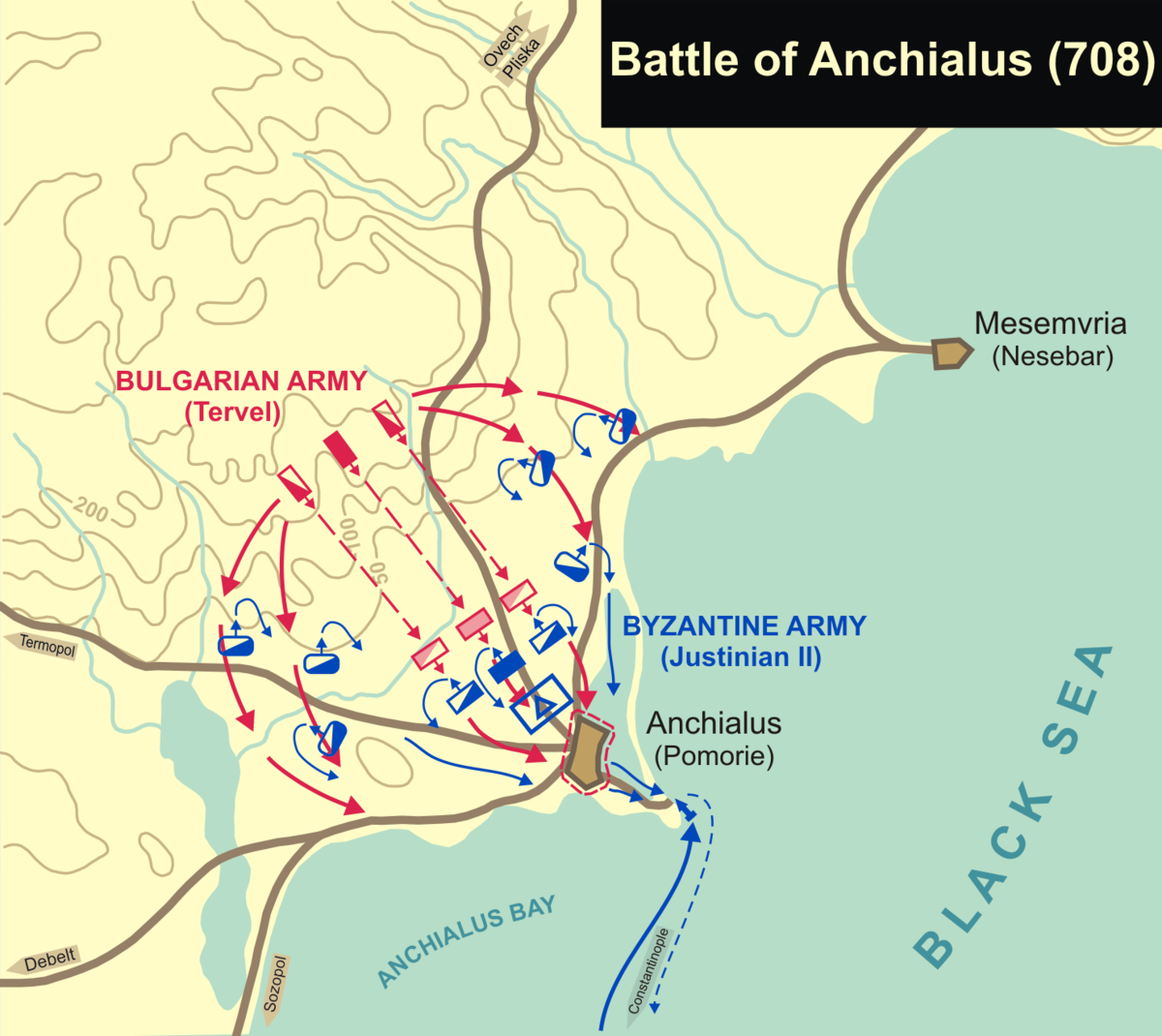
IX. Felt Bad- The Bloody End of his Life and Dynasty

Justinian II’s brutal suppression of opposition against him true enough turned the city of Cherson where he was once exiled to against him in 711 wherein its people were supported by the same Khazar khagan and Justinian’s brother-in-law Busir.

In Cherson, not only had its people rebelled but Busir setting his eyes to conquer it from the Byzantines appointed his own Khazar official, therefore further angering Justinian who then sent an expedition to Cherson to quell the rebellion. The expedition thus succeeded in capturing the Khazar official and putting to death the leaders of the rebellion, but when returning to Constantinople, the ships of the expedition sunk in a storm. Justinian then sent another expedition to quell the Chersonite rebellion and the Khazars assisting them, and although the imperial army laid siege to Cherson, the Khazar army arrived right in time to save the city all while the commander of this expedition Mauros- a former Bulgar chieftain who became a Byzantine patrician- and the newly appointed governor of Cherson Elias defected to the rebels who have already proclaimed the general Bardanes who was exiled to Cherson as emperor against Justinian. With Bardanes now proclaimed as emperor Philippikos, the imperial expeditionary fleet sent to Cherson thus sailed back to Constantinople all while Justinian headed east to campaign against the Arabs in Armenia. However, Justinian rushed west back to Constantinople immediately after hearing news of Bardanes approaching Constantinople and Mauros’ defection to the rebels, and after seeing the rebel ships in the Black Sea, it was too late for him as Philippikos Bardanes had already seized the capital where the garrison who was never really loyal to Justinian opened the city to the rebels anyway.
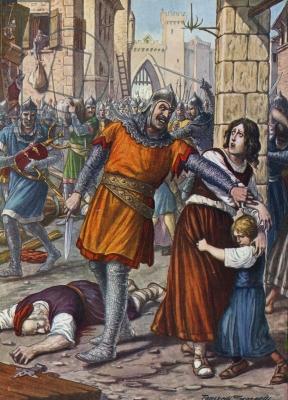
Before making it back to Constantinople, Justinian was arrested by Elias who out of revenge for Justinian’s massacre of his family put an end to him once and for all by beheading Justinian with his sword. The decapitated head of Justinian II was thus sent to Rome and Ravenna in Italy as proof of his execution wherein the people of Ravenna rejoiced seeing it. Justinian though was not the only person to die in November of 711 as when Philippikos had seized the capital, his henchman John and Mauros now serving him was able to track down Justinian’s mother Anastasia and his 6-year-old son and co-emperor Tiberius to the Church of Blachernae in Constantinople. Despite Anastasia’s pleas to spare her grandson, the young Tiberius who hid at the church’s sanctuary while also holding on to the relic of the True Cross was dragged out of the church and stabbed to death, thus ending the Heraclian Dynasty for good. The fate of Justinian’s mother Anastasia and wife Theodora though remain unknown, though it is most likely that Anastasia became a nun whereas Theodora was returned to her brother in Khazaria if she was still alive at this point.
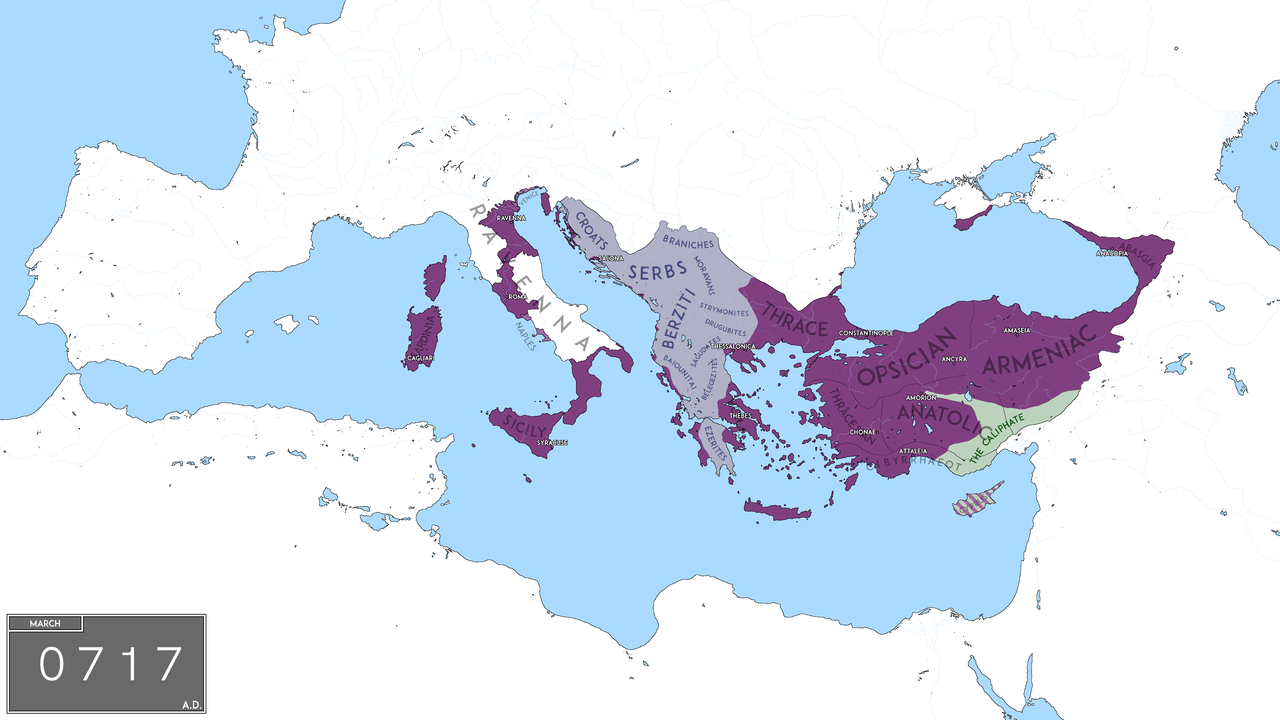
X. Hated Him- His Brutal Suppression of Ravenna

If you wonder why the people of Ravenna rejoiced at seeing the decapitated Justinian’s head, this was because Justinian II in 709 ordered a punitive expedition against Ravenna, capital of the Byzantine Exarchate of Italy which put to death many of Ravenna’s citizens.
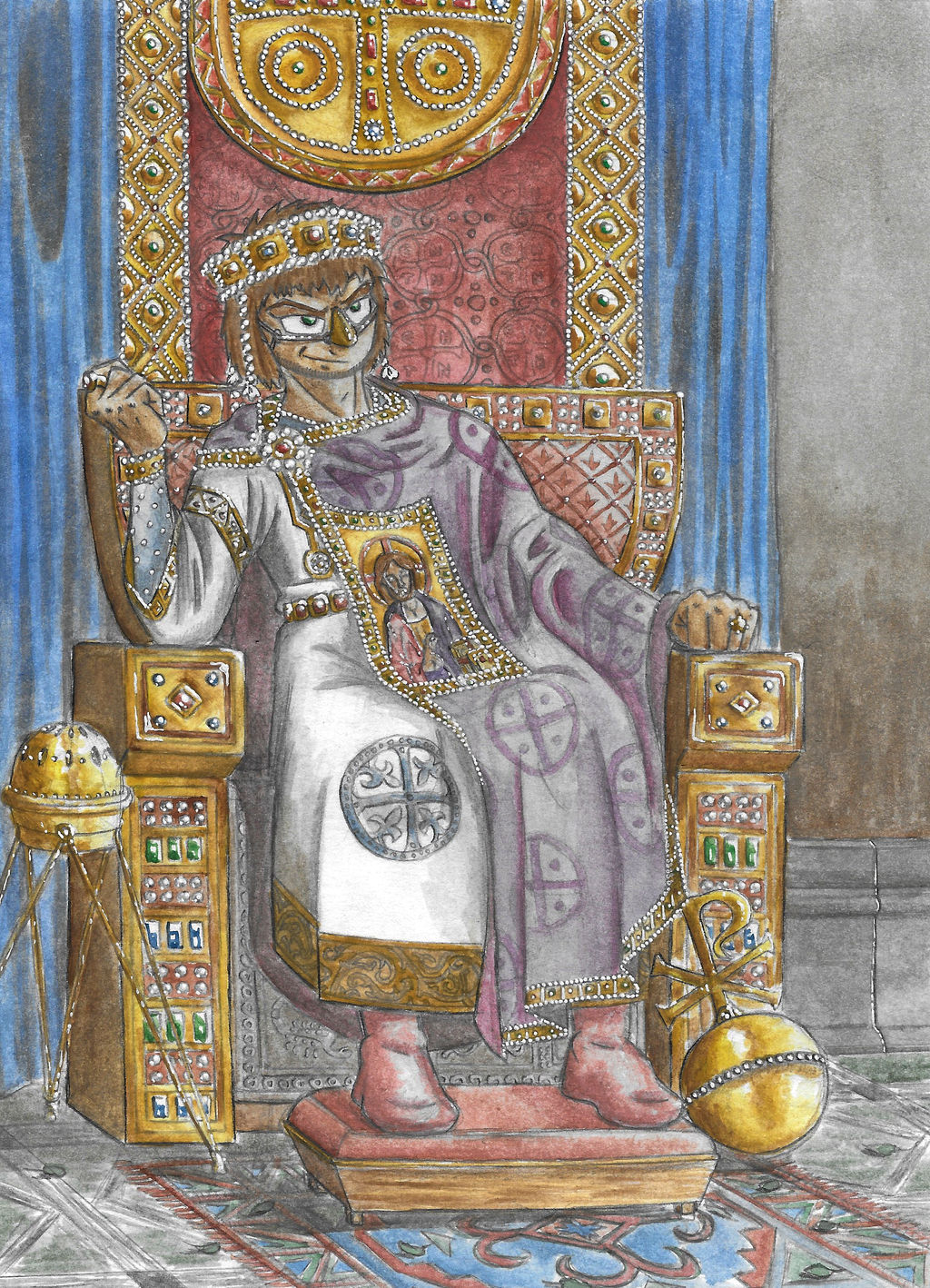
Justinian sure enough had always hated the nobility, but he hated the nobles of Ravenna even more for apparently plotting his deposition back in 695. Both as an act to take revenge on those who wronged him but also to reinstate the pope’s authority over the defiant people of Ravenna, Justinian ordered a military expedition against the city led by the Strategos of Sicily Theodore. When arriving in Ravenna, Theodore tricked its leading citizens who were mostly nobles by inviting them to a banquet only to have them all arrested and sent to Constantinople by ship wherein the emperor ordered them all executed upon arrival. Additionally, Theodore and his forces sacked Ravenna and captured its archbishop Felix, a rival of the new pope Constantine who Justinian then had blinded when he was sent to Constantinople together with the nobles Justinian had executed. With the incident in Ravenna over, Justinian invited Pope Constantine to come over to Constantinople in 710- considering that relations between Constantinople and the Papacy were now good- in order to approve the canons Justinian issued years ago, and although the visit of the pope was a success as the pope true enough approved the canon issued by Justinian at the Quinisext Council years earlier, just a year later, Justinian would lose the throne again together with his life.

Pope Constantine’s visit to Constantinople too would be the last time a pope would visit Constantinople until Pope Paul VI’s visit to Istanbul in 1967. Meanwhile, in Byzantium, the 22-Year-Anarchy which began with Justinian II’s deposition by Leontios in 695 would continue for 6 more years after Justinian’s death in 711 which saw a change of emperor 3 more times: first being Anastasius II who took over after deposing and blinding Philippikos Bardanes in 713 during a military rebellion, then Theodosius III who took over from Anastasius II in 715 after another military rebellion, and finally Konon who took over from Theodosius III after once again another military rebellion in 717 wherein Konon thus became Emperor Leo III. It would only be in Leo III’s reign after the Byzantine victory over the Arab Siege of Constantinople from 717-718 that the anarchy would end and that stability would return to the empire.


Conclusion

Now, this is about it for this list of 5 times we hated Justinian II and 5 times we felt bad for him. For the times we may despise him but also for those times when we come to feel bad for him, this thus shows us that Justinian II was really a complex figure as no matter how despicable the things were he did to suppress opposition against him and take revenge on those who wronged him, there were still times we may have felt bad for him even though he may have still deserved these things happening to him such as losing his nose and throne, having an attempt on his life, and being executed together with his son which is a rather unfair way to end a strong dynasty being the Heraclians. At the same time, Justinian II’s first deposition in 695 and his eventual fall and execution in 711 only made things worse for the empire by plunging it into anarchy. Now, I would like to know what are your thoughts on Justinian II on whether he was a truly evil emperor with no redeeming qualities or if you would still feel bad for him at times no matter how cruel he may have been or if he was simply painted in such a bad light by the historians who wrote about him; please say so in the comments. For me, I surely think that Justinian II’s evil-doings were simply exaggerated by the likes of Theophanes and Nikephoros but I still think he may have been overly cruel, bloodthirsty, and autocratic, at times, yet I can still admire him for his strong determination and fearlessness, traits that surely defined the Heraclian Dynasty’s rule over Byzantium. At the same time, I also think he may have been to obsessed about emulating his namesake Emperor Justinian I the Great, though I don’t know if you viewers would think the same. Once again, thank you all for reading this article on Justinian II and thank you as well for visiting my site!
